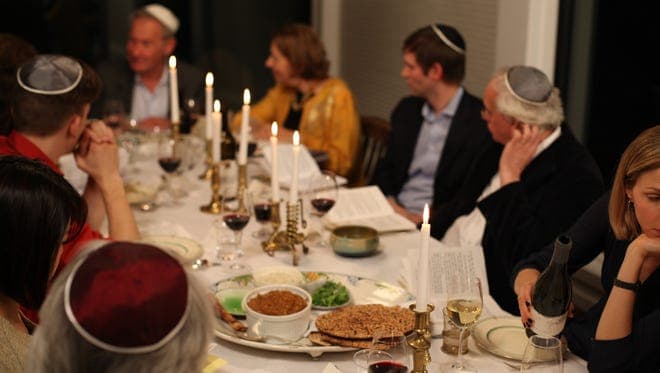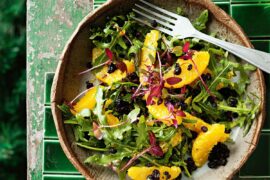Understanding Passover: A Family-Friendly Guide to the Festival
Hey there, fabulous parents! Are you gearing up for a season filled with tradition, storytelling, and delicious food? If Passover is on your radar, and you’re looking to create meaningful memories with your little ones, you’re in the right place! Today, we’re diving into the heart of Passover, a festival rich with history, culture, and family values. So, grab a cup of your favorite beverage, and let’s embark on this enlightening journey together!
What Is Passover, and Why Is It Celebrated?
Passover, also known as Pesach in Hebrew, is a major Jewish festival celebrated with joy and reverence each spring. It commemorates the liberation of the Israelites from slavery in Egypt, a story vividly told in the Book of Exodus. During Passover, families come together to remember their ancestors’ trials, tribulations, and ultimate triumph through faith and resilience. It’s a time to reflect on the themes of freedom, gratitude, and communal solidarity.
The spiritual essence of Passover revolves around the concept of liberation, both on a personal and collective level. Its timeless teachings encourage us to evaluate the aspects of our lives that might be restricting us, and to embrace a path that leads to spiritual growth and enlightenment.
When Is Passover Celebrated?
Passover is observed for eight days in many Jewish communities around the world, starting on the 15th day of the Hebrew month of Nissan. This usually falls in March or April, according to the Gregorian calendar. In Israel and for some Jewish communities, Passover is celebrated for seven days.
The Significance of the Seder Meal
The hallmark of Passover is the Seder, a special ceremonial meal held on the first two nights of the festival (one night in Israel and some other communities). The word “Seder” means “order” in Hebrew, and the meal follows a specific sequence that’s designed to pass down the story of the Exodus from generation to generation. From the youngest child asking “The Four Questions” to the adults discussing the meaning behind the rituals, everyone has a role to play in this interactive experience.
During the Seder, participants use a Haggadah, a guidebook that outlines the Seder’s steps and includes the narrative of the Exodus, prayers, and songs. It serves as a roadmap for the evening, ensuring the traditions are preserved through a structured yet engaging format.
Passover Foods and Their Symbolisms
The foods served during the Seder are not only delicious but also deeply symbolic. Each food item on the Seder plate represents a piece of the Passover story:
- Matzah: The unleavened bread that Jews ate as they hurriedly left Egypt. It’s a symbol of both the oppression the Israelites faced as slaves and their haste to find freedom.
- Maror: Bitter herbs, usually horseradish, symbolizing the bitterness of slavery.
- Charoset: A sweet mixture of apples, nuts, wine, and spices that represents the mortar used by enslaved Israelites when building structures for their Egyptian taskmasters.
- Karpas: A green vegetable, often parsley, representing hope and renewal, dipped in salt water to remind of the tears shed in bondage.
- Z’roa: A roasted shank bone that stands for the paschal lamb sacrificed on the eve of the exodus.
- Beitzah: A roasted egg, symbolizing the festival sacrifice brought in the days of the Temple, and a sign of mourning for its destruction.
Unlocking the symbols of Passover is much like a treasure hunt, where every item tells a part of an epic story of struggle, faith, and liberation. Such powerful imagery helps children and adults alike connect to a past that continues to shape Jewish identity and values today.
Don’t worry if this all seems overwhelming at first—the beauty of Passover lies in its ability to open conversations and to grow in meaning with each passing year. And as you prepare for this profound festival, remember that you’re creating not only a history lesson for your kiddos but a legacy of warmth, inclusion, and joy for generations to come. Stay tuned for more as we continue to explore the wonderful traditions and practices that make Passover an unforgettable experience! Ready to learn more about how to prepare for the Passover Seder and create memorable experiences for your family? Stick around, because there’s plenty more to share!

Passover Preparation: 5 Essential Insights for Parents
Hello, amazing parent crew! As the Passover festival approaches, it’s the perfect time to get familiar with the essentials of this treasured celebration. Let’s hop right into five key tips that will help you prepare for Passover and ensure it’s a hit with your family!
1. Understanding the Passover Story
Before the Seder plates are set and the matzah is broken, it’s crucial to have a grasp on the story of Passover. This biblical tale is a cornerstone of Jewish culture and faith, detailing the miraculous journey from slavery to freedom. Share this story with your children through engaging books or movies tailored for youngsters, so they grasp the importance and excitement of the festival.
2. Seder Planning and Practice
Coordinating a Seder can be akin to directing a family play. Rehearse the traditional songs and rituals with your children to promote their confidence and participation. Jot down a checklist for the Seder specifics—matzah, wine or grape juice, Haggadahs for everyone, and a Seder plate with all the symbolic foods. Remember, practice and preparation can make all the difference between chaos and a cherished evening.
3. Meal Preparation and Recipes
Passover cuisine is not just about what’s on the table, but the stories and history behind it. Involve your kids in the cooking process—let them help with simple tasks like mixing charoset or setting the table. Look up kid-friendly Passover recipes online and choose a new dish to try together, making the kitchen an exciting hub of festival anticipation.
4. Crafting Meaningful Traditions
Create your unique family traditions within the framework of Passover. Whether it’s a special game, a creative retelling of the Exodus, or a pre-Seder craft session, these personal touches will resonate with your family and become the anticipated highlights of the holiday for years to come.
5. Embracing a Spirit of Inclusivity
Passover is not just a historical recount; it’s a living narrative that invites discussions about freedom and justice in today’s world. Encourage your children to ask questions and express their thoughts during the Seder. Introduce them to the idea that everyone’s voice is valued and that asking questions is a sign of a keen, inquiring mind.
Parents, as you embrace the whirlwind of Passover planning, never forget that the effort you pour into this celebration sprinkles your family’s life with knowledge, fun, and unity. Let these tips be your trusty compass, and soon you’ll find yourself not just prepared but genuinely excited for the festival. Onwards and upwards to an unforgettable Passover!
See more great Things to Do with Kids in New Zealand here. For more information see here
Disclaimer
The articles available via our website provide general information only and we strongly urge readers to exercise caution and conduct their own thorough research and fact-checking. The information presented should not be taken as absolute truth, and, to the maximum extent permitted by law, we will not be held liable for any inaccuracies or errors in the content. It is essential for individuals to independently verify and validate the information before making any decisions or taking any actions based on the articles.




